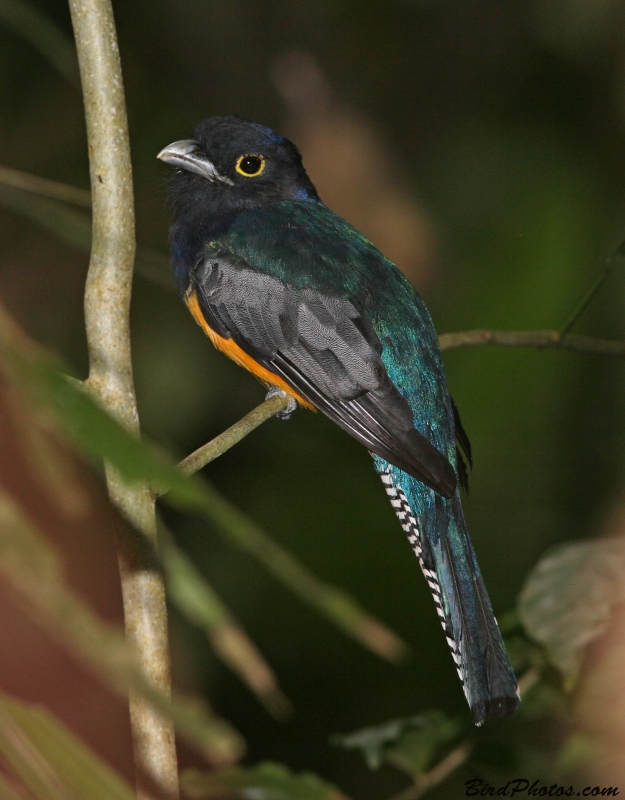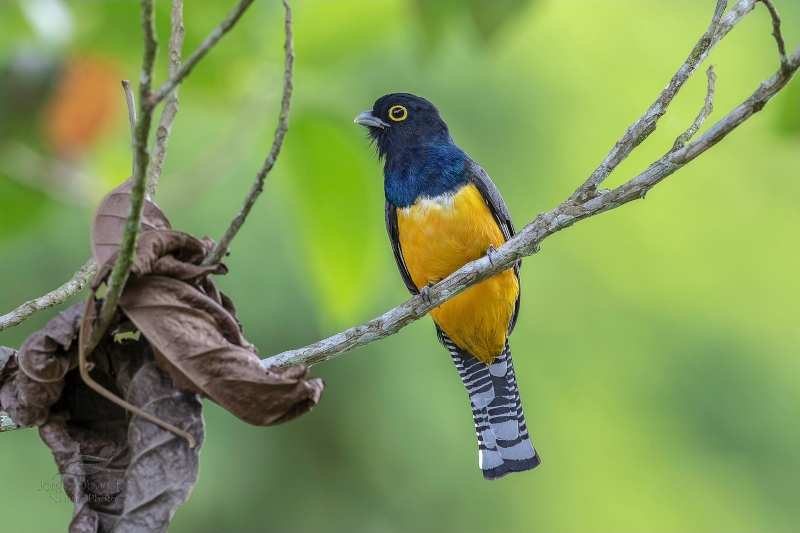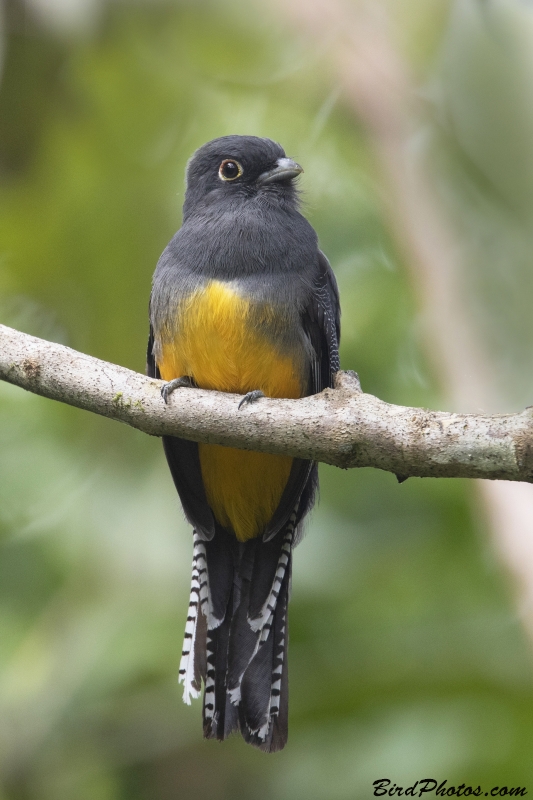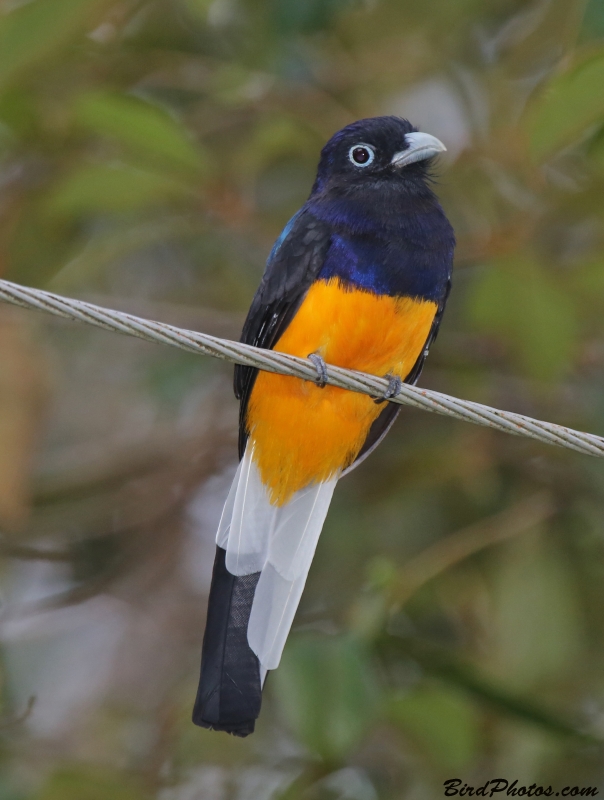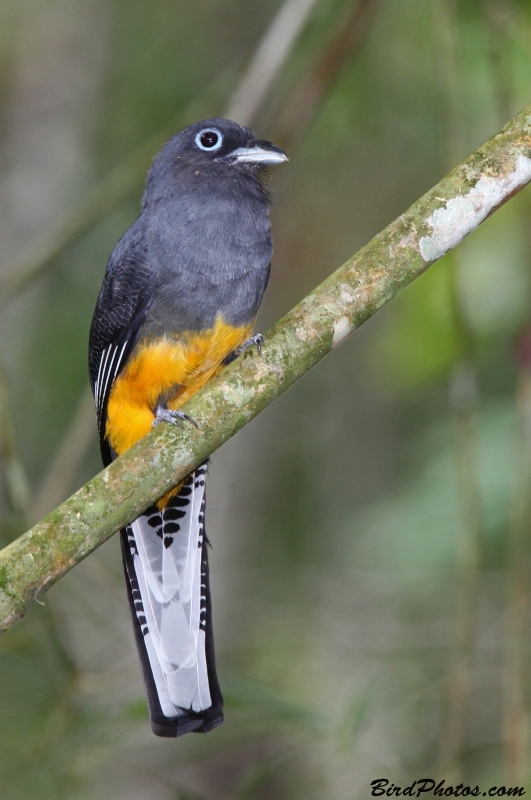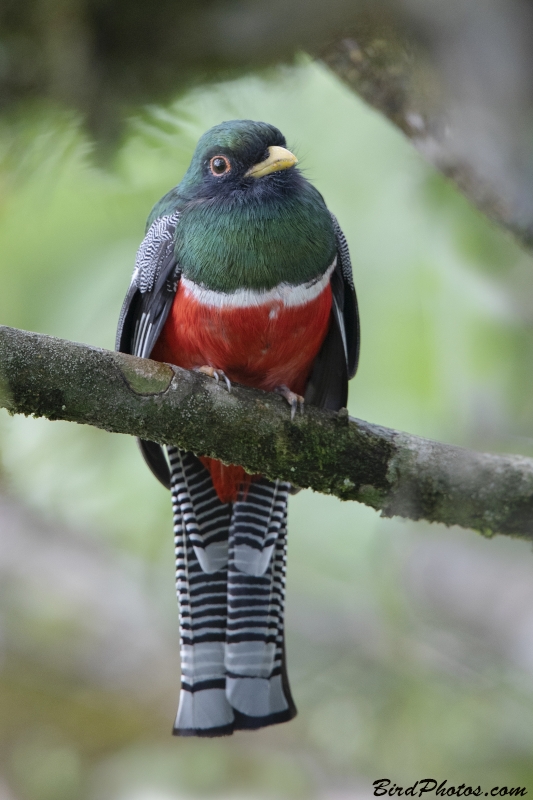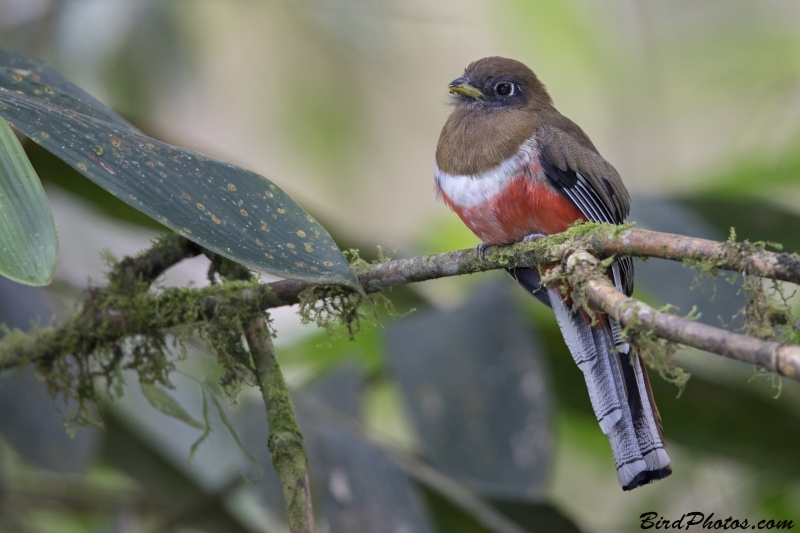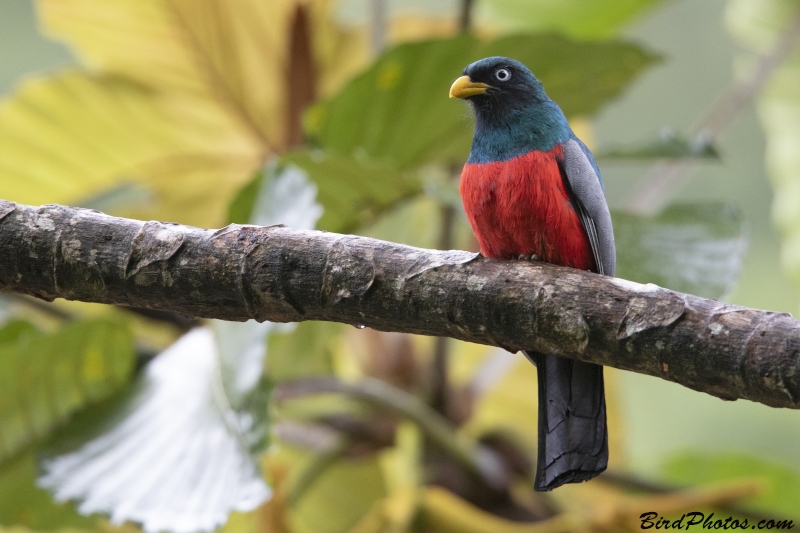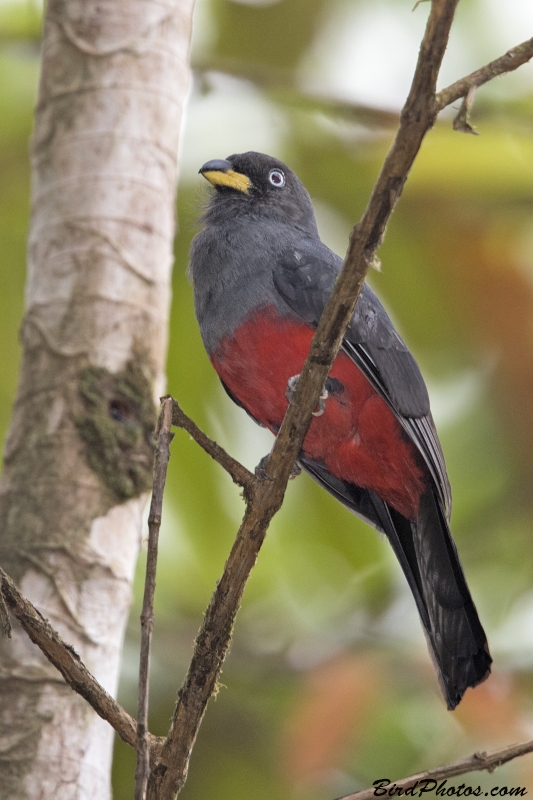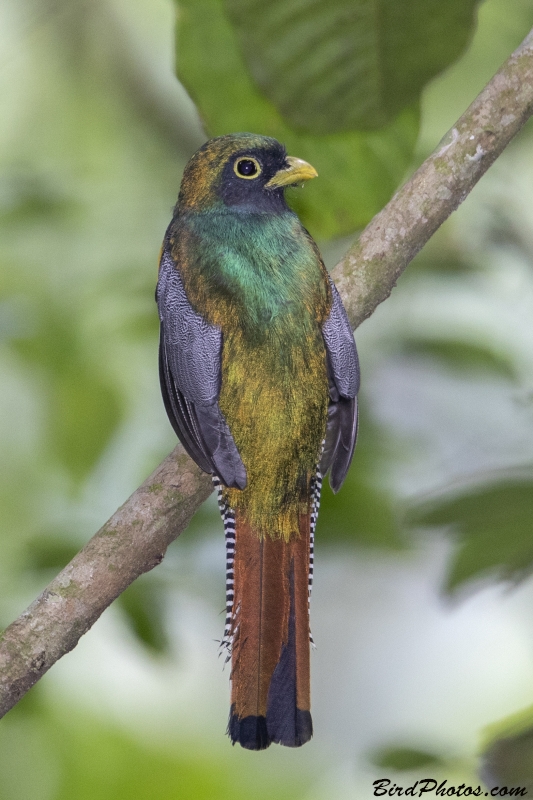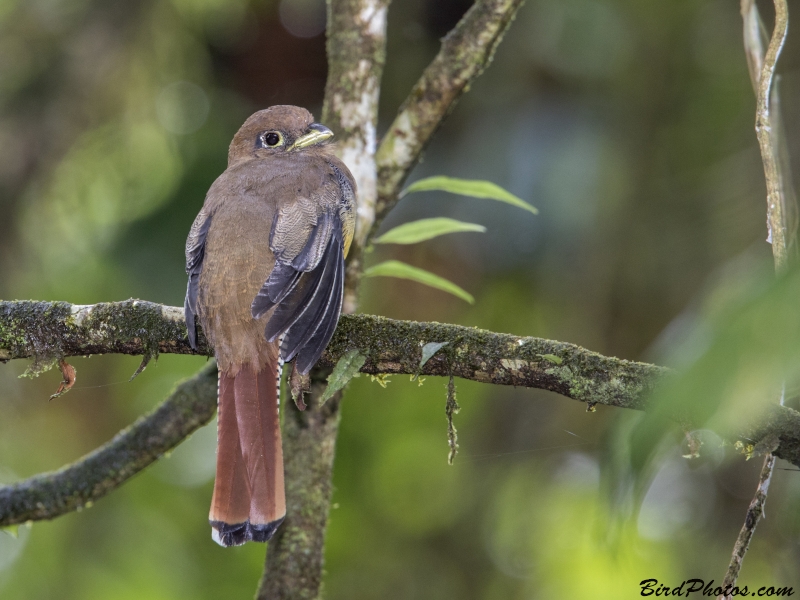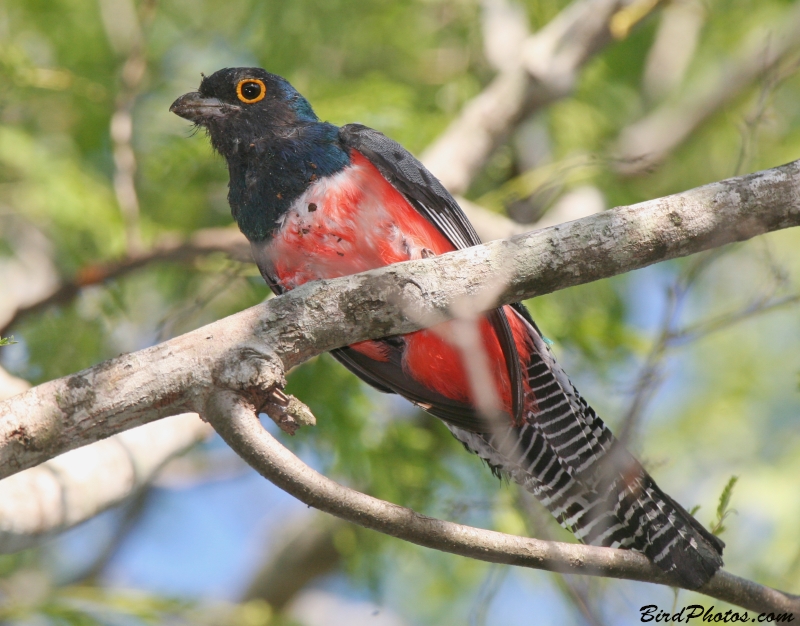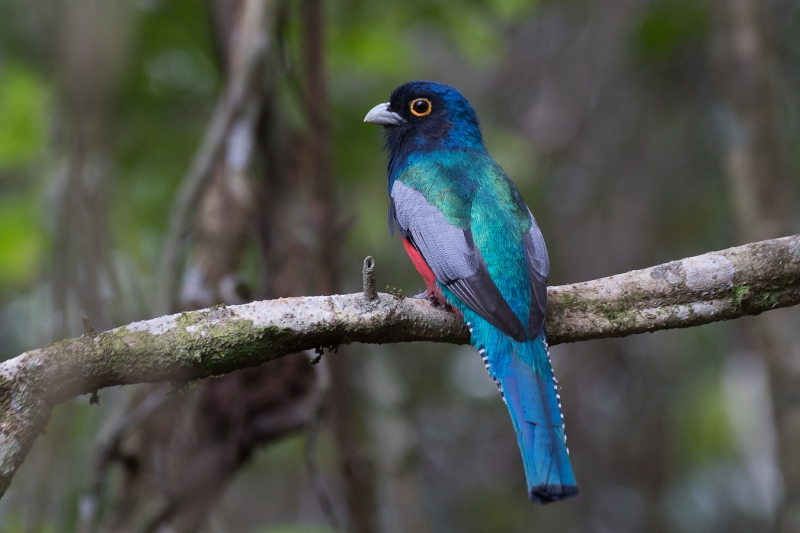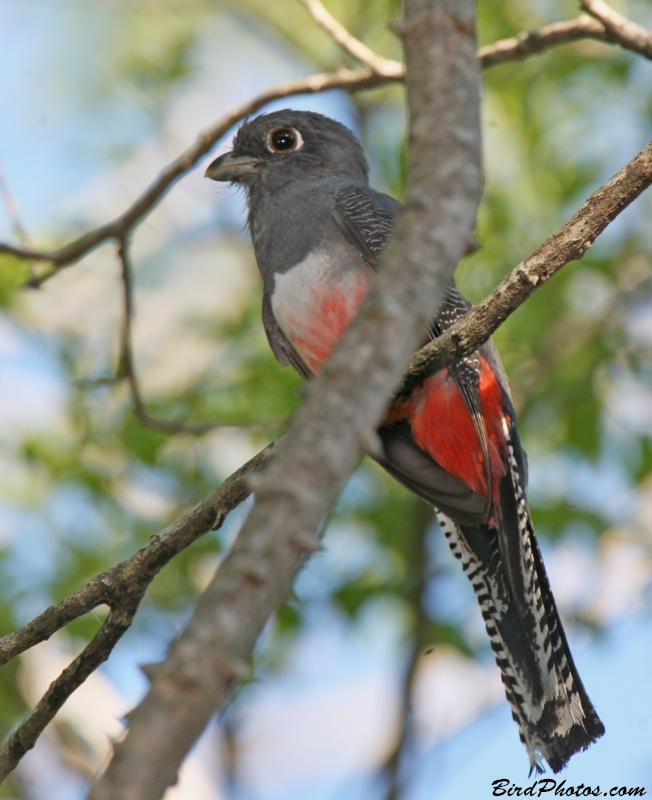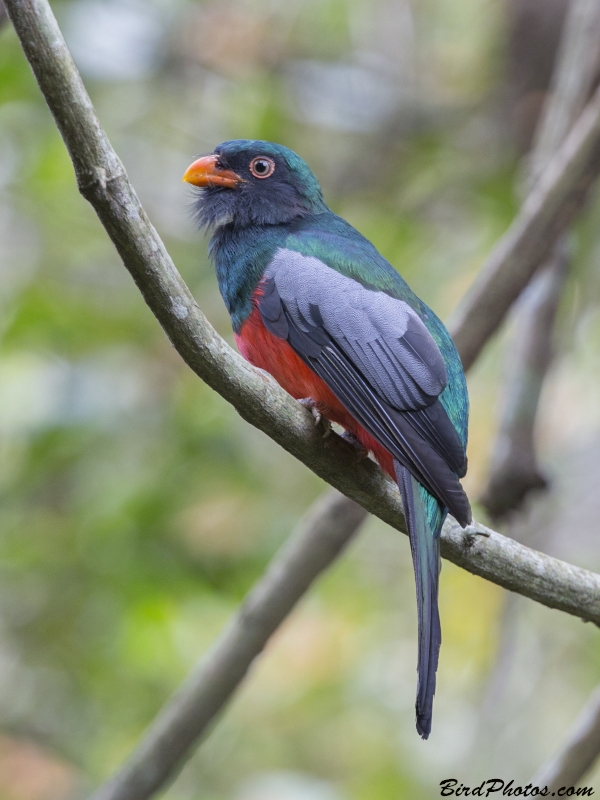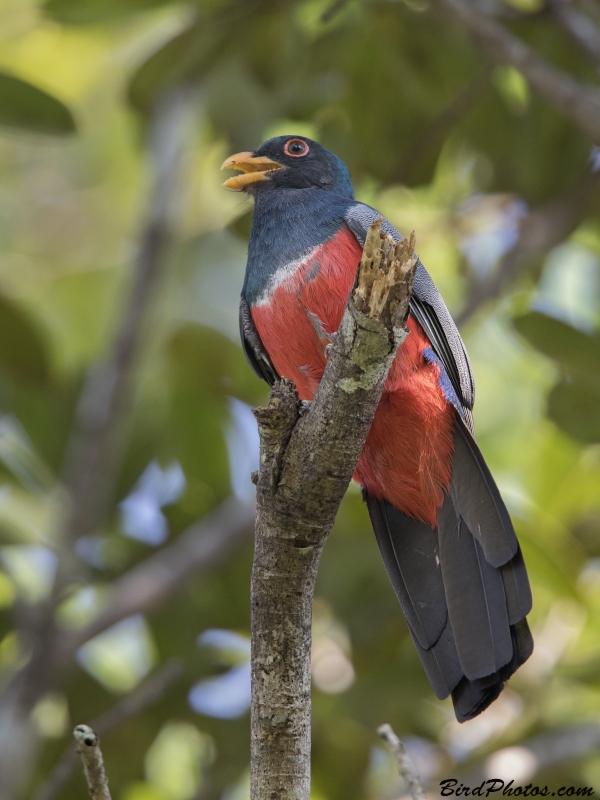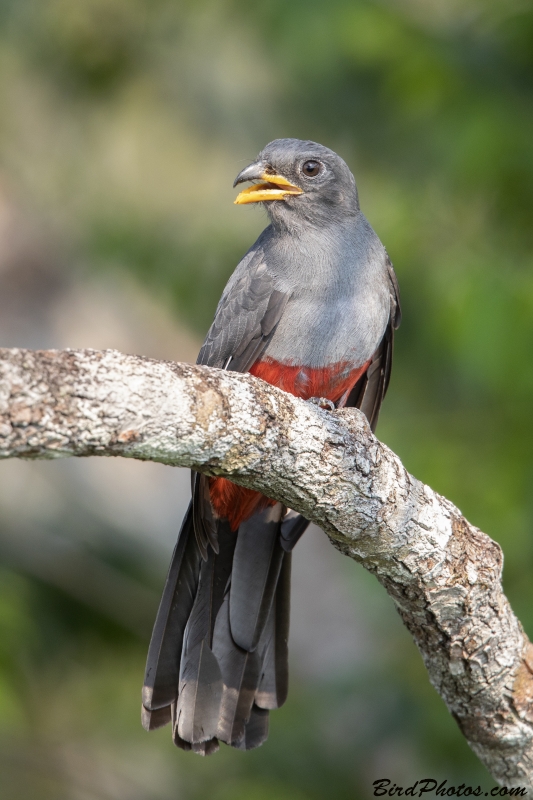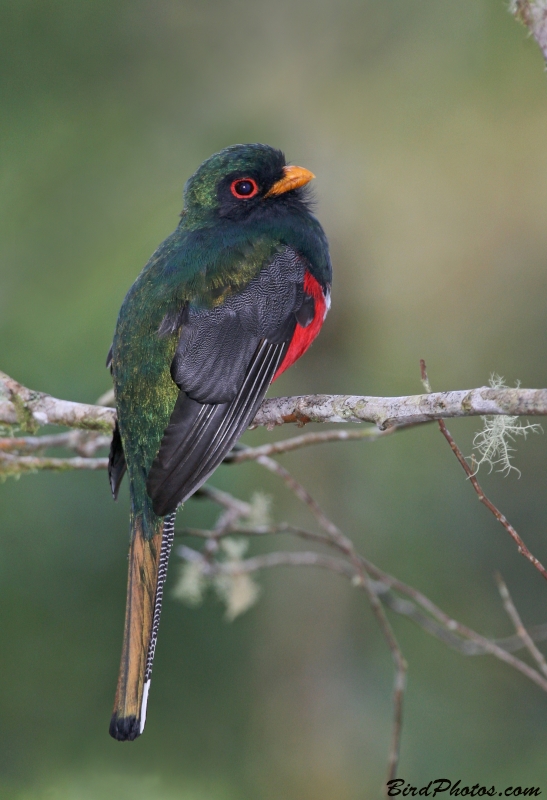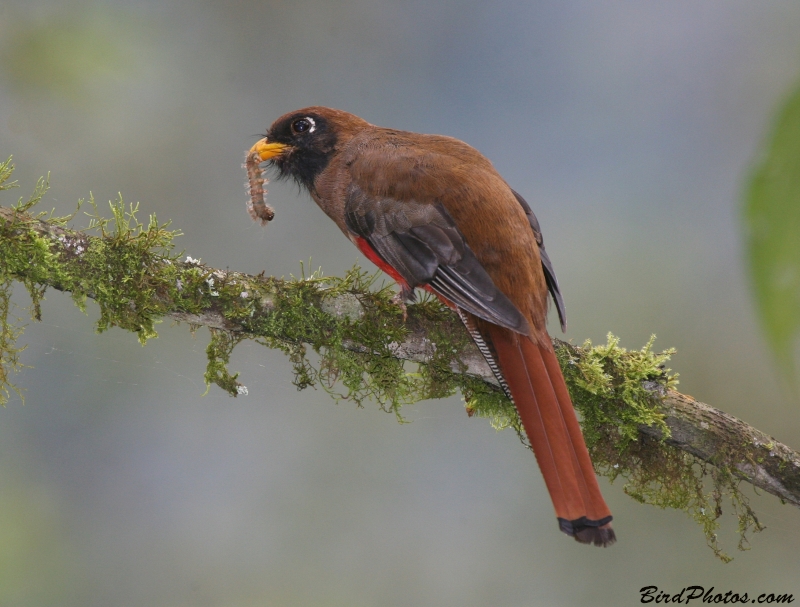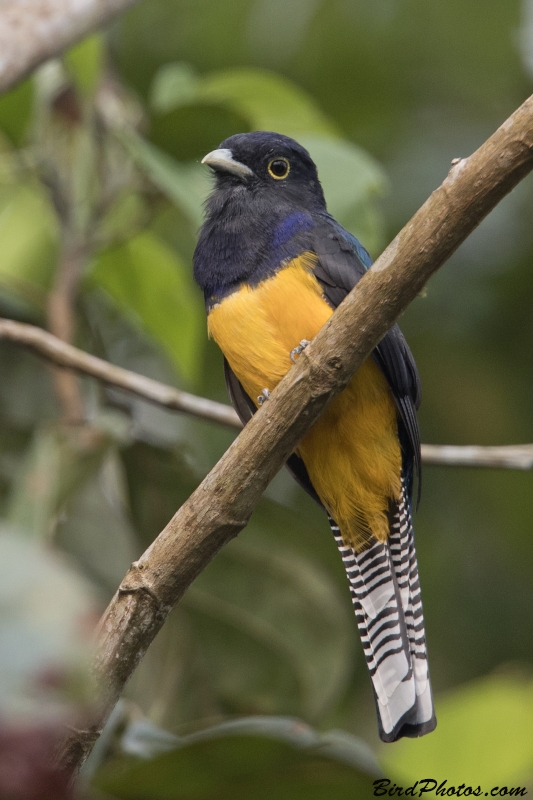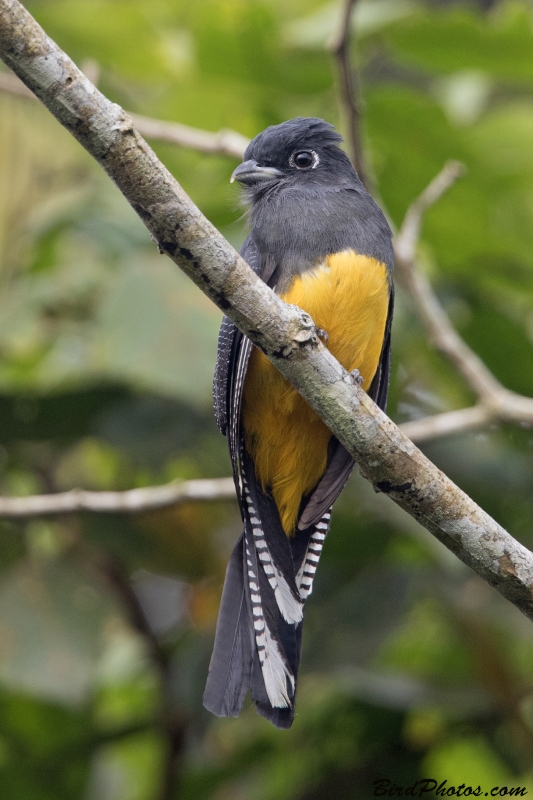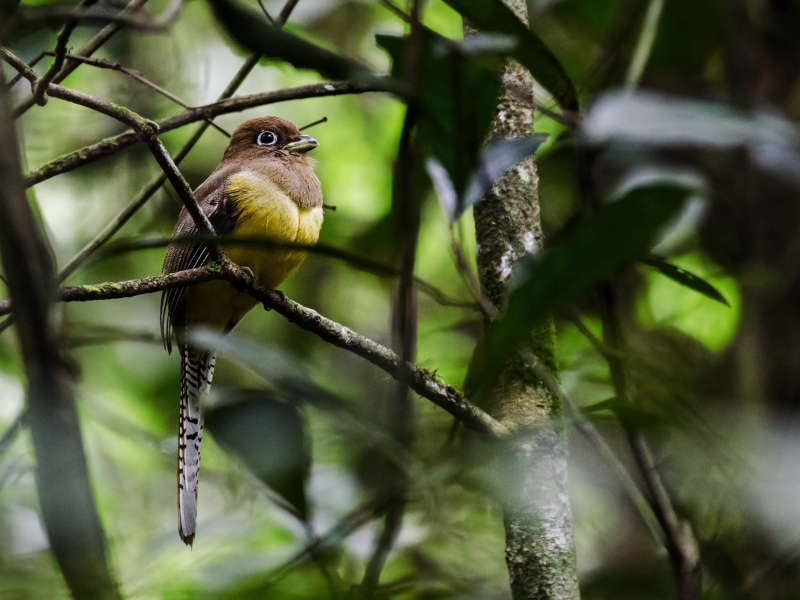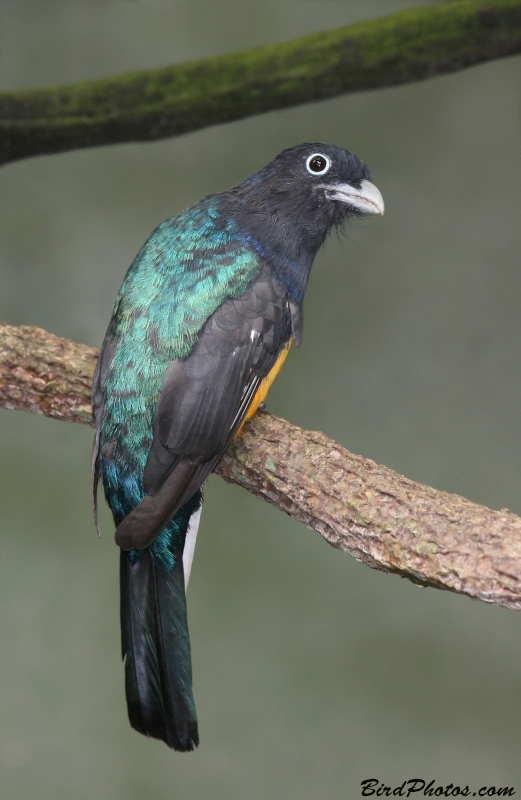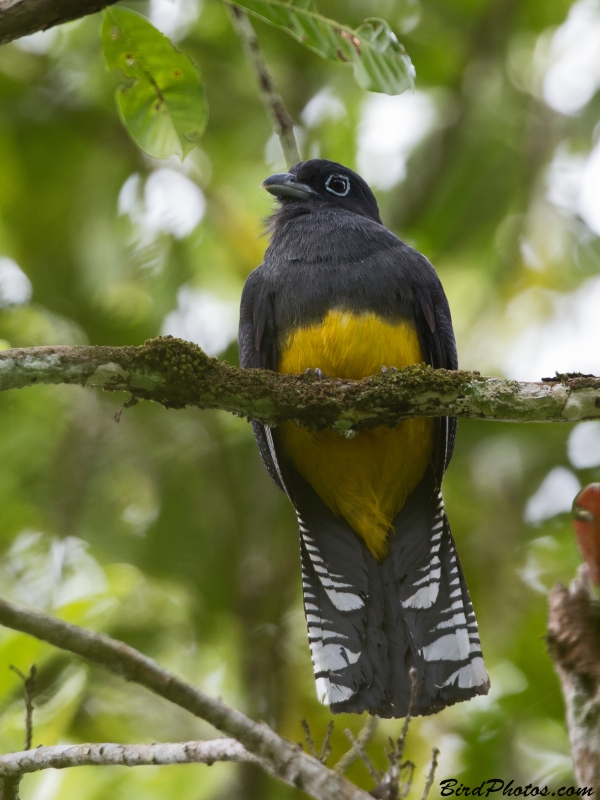A small trogon. Note broken (or thin at top/bottom) eye-ring on female, and yellow eye-ring on male. From back with broken eye-ring. | ||||||||||||||||||
| ||||||||||||
Generally found below 1800 m. Similar to high altitude Masked Trogon, with some range overlap around 1800-2000m. Note female has two colored bill compared to higher altitude Masked Trogon, and the male inside tail pattern is less finely streaked and doesn't have large white patches. A Andean male. An unusual orange-bellied individual reminiscent of the Orange-bellied Trogon in Costa Rica that was lumped with the Collared Trogon. | ||||||||||||
Also called Blue-tailed Trogon. Note white eye, and blue back of tail. From back. | ||||||||||||
Sometimes called the Rufous Trogon because the female has head, back and back of tail are rufous. Male has green back, unlike other trogons with yellow bellies. Female Choco Black-throated Trogons may have a yellow eye-ring. Otherwise it is light blue. An interesting bird apparently changing colors. | ||||||||||||
| ||||||||||||||||||
| ||||||||||||
A large trogon generally seen higher in the canopy than other trogon species. Male from back. | ||||||||||||
Found at over 1800m in most of the Andes. Compare to Collared Trogon found at lower altitudes; on male note more finely barred tail with bigger white patches. Mating. Male from front. | ||||||||||||
A smaller trogon, and closely related to the Gartered Trogon. Note, like Gartered, the male has yellow eye-ring, and female has eye-ring broken at the top and/or bottom. Male from back. | ||||||||||||
| ||||||
| ||||||
Generally the most common trogon in its range. Male from front. Additional photo. | ||||||||||||
